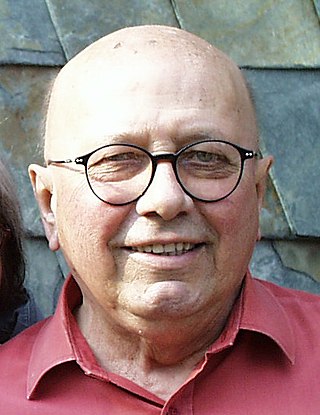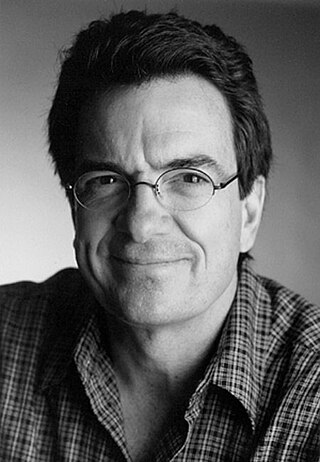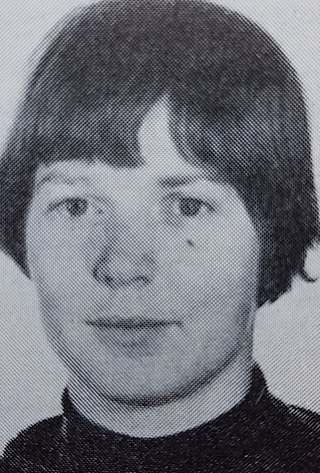
Studio glass is the modern use of glass as an artistic medium to produce sculptures or three-dimensional artworks in the fine arts. The glass objects created are intended to make a sculptural or decorative statement, and typically serve no useful function. Though usage varies, the term is properly restricted to glass made as art in small workshops, typically with the personal involvement of the artist who designed the piece. This is in contrast to art glass, made by craftsmen in factories, and glass art, covering the whole range of glass with artistic interest made throughout history. Both art glass and studio glass originate in the 19th century, and the terms compare with studio pottery and art pottery, but in glass the term "studio glass" is mostly used for work made in the period beginning in the 1960s with a major revival in interest in artistic glassmaking.
Frederick Carder was a glassmaker, glass designer, and glass artist who was active in the glass industry in both England and the United States, notably for Stevens & Williams and Steuben, respectively. Known for his experimentation with form and color, Carder's work remains popular among collectors and can be found in numerous museum collections, including The Corning Museum of Glass, which houses theFrederick Carder Gallery, Chrysler Museum of Art, and the Detroit Institute of Arts. He was born in Staffordshire, England, and died in Corning, New York, where he had made his home in 1903.
Josiah McElheny is an artist and sculptor, primarily known for his work with glass blowing and assemblages of glass and mirrored glassed objects. He is a 2006 recipient of the MacArthur Fellows Program. He lives and works in New York City.
Fred Wilson is an American artist of African-American and Caribbean heritage. He received a BFA from Purchase College, State University of New York. Wilson challenges colonial assumptions on history, culture, and race – encouraging viewers to consider the social and historical narratives that represent the western canon. Wilson received a MacArthur Foundation "genius grant" in 1999 and the Larry Aldrich Foundation Award in 2003. Wilson represented the United States at the Biennial Cairo in 1992 and the Venice Biennale in 2003. In May 2008, it was announced that Wilson would become a Whitney Museum trustee replacing Chuck Close.

Michael M. Glancy was an American glass and sculpture artist and arts educator.

Stanislav Libenský and Jaroslava Brychtová were Czech contemporary artists. Their works are included in many major modern art collections, such as the Metropolitan Museum of Art and the Victoria & Albert Museum.

David Scott Patchen is an American glass artist who uses the techniques of cane and murrine in an American style. Patchen's work is internationally known primarily for a combination of intricately patterned and vibrant color combinations in large scale blown glass. His work is in many private and public collections, featured in many publications and frequently in shows such as SOFA, Chicago, ART Shanghai, COLLECT London and ART Palm Beach. His work is shown in galleries and in museums in the U.S., and Europe. Patchen was awarded an artist residency in 2010 in Seto city, Japan where his visit was covered by the local media and included lectures, demonstrations and a show of his work at the Seto City Art Museum. Based on Patchen's expertise, his book is part of the permanent collection of Giorgio Cini Foundation's Centro Studi del Vetro library in Venice, Italy and the Rakow Library at the Corning Museum of Glass.

Dan Owen Dailey is an American artist and educator, known for his sculpture. With the support of a team of artists and crafts people, he creates sculptures and functional objects in glass and metal. He has taught at many glass programs and is professor emeritus at the Massachusetts College of Art, where he founded the glass program.
Sonja Blomdahl is an American blown glass artist.
Ann Gardner is an American glass artist known for her large-scale sculptural and architectural installations.
Debora Moore is a contemporary glass artist. She is best known for her glass orchids.

Ann Wolff is a glass artist who lives and works in both Gotland, Sweden, and in Berlin, Germany. Wolff's blown, engraved, and cast work explores the lives of women, their relationship with one another, and their position in society. She is considered one of the founders of the international Studio Glass movement.

Amber Cowan is an American artist and educator living and working in Philadelphia. Cowan creates fused and flameworked glass sculptures from cullet and recycled industrial glass.
Jenni Kemarre Martiniello is an Australian Aboriginal (Arrernte) glass artist. She is best known for making glass vessels inspired by woven forms traditionally made by indigenous peoples. She is also known for her advocacy for and support of indigenous artists.
Thaddeus Wolfe is an American designer and artist, known for his glass vessels, light fixtures, and wall-bound pieces made through a "unique molding process that combines one-of-a-kind plaster casts and expert glassblowing". His glasswork is multi-layered and highly textured, often incorporating brass and bronze. In 2016, Wolfe was awarded the Rakow Commission given every year by the Corning Museum of Glass. Wolfe lives and works in Brooklyn, New York.

Karol B. Wight is a museum administrator and is currently the president and executive director of The Corning Museum of Glass. She specializes in the field of ancient glass.
Arlon Bayliss is a visual artist, glass sculptor, and emeritus professor of art at Anderson University, known for his monumental public art installations in Indiana, as well as for his studio glass and factory art glass represented in European art museum collections. Bayliss has designed glass art series for companies such as Rosenthal, Steuben, Blenko and EOS Murano.
Rui Sasaki is a glass artist from Japan. Her work is in the permanent collection of Corning Museum of Glass.
Isabel de Obaldía is a Panamanian glass artist. Her work is included in the collection of the Corning Museum of Glass.

Anna Mlasowsky is a German artist. She is known for her experimental and boundary pushing work in glass and is recognized as one of the leading female artist working in glass today.















